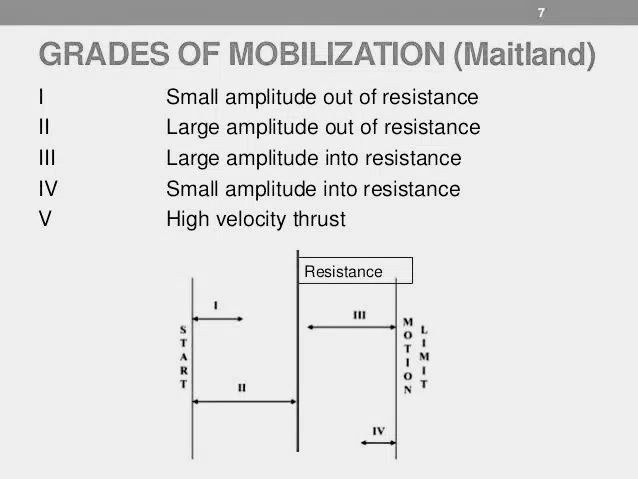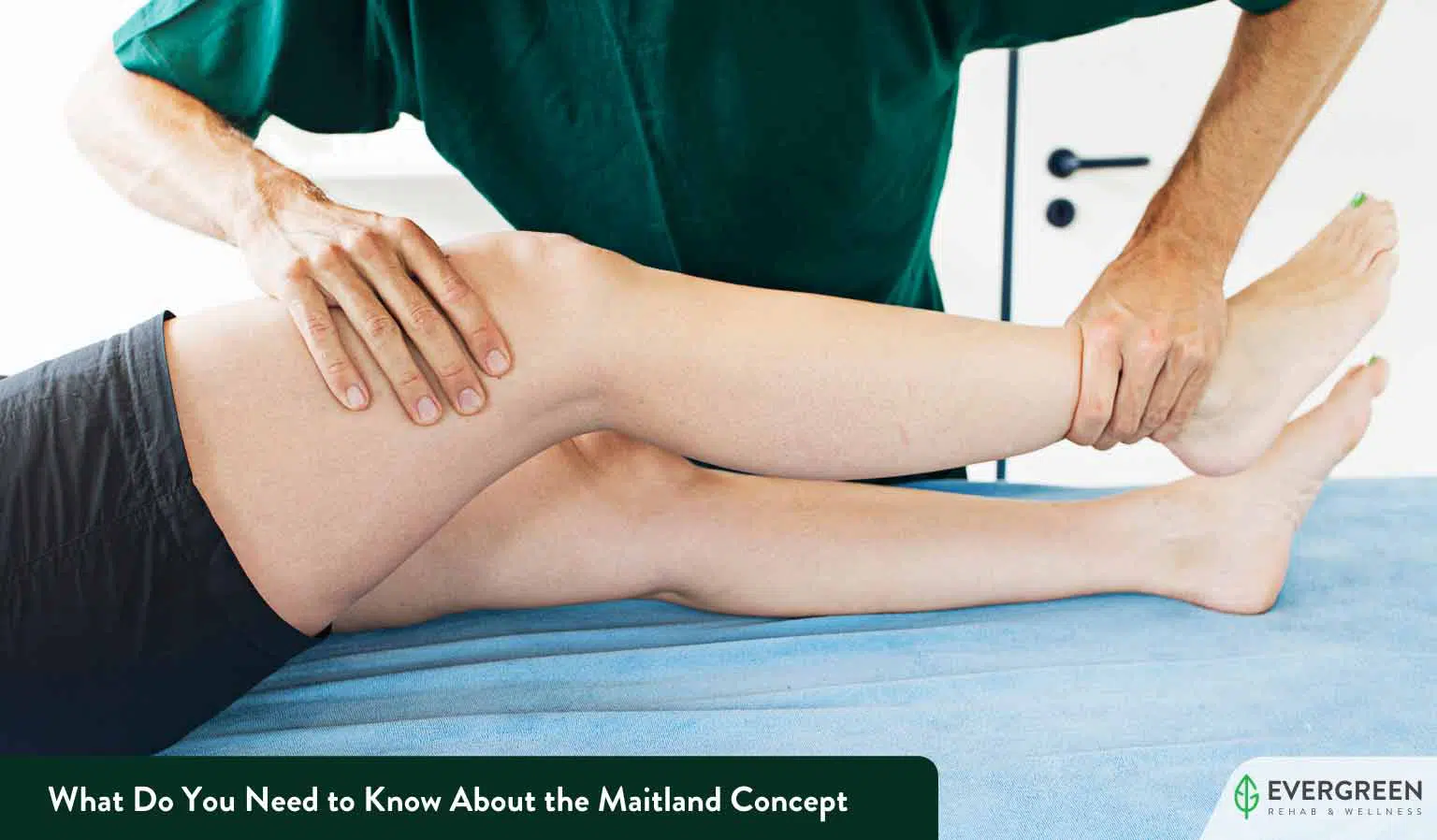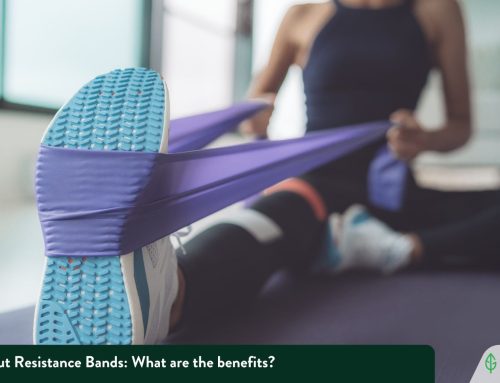Are you having a functional disorder in the joint, muscle, and nervous system? Are you in pain and looking for recovery options? Did you know that there is one effective manual therapy technique that can help with those types of pain?
One thing that you can take advantage of is the use of the Maitland Concept. Let’s discover the key information of the Maitland Concept and its key advantages.
What is the Maitland Concept?
As defined by International Maitland Teachers Association (IMTA), the Maitland concept …
relates to manual therapy in the initial and ongoing treatment of functional disorders in the joint, muscle, and nervous system. The use of Maitland Concept techniques is based on clinical reasoning and also takes the International Classification of Functioning, Disability, and Health (ICF) into account.
Also, known as the Maitland technique, it uses passive and accessory mobilization of the extremities and the spine. Being used to treat mechanical pain and stiffness. Also, it uses neurodynamic techniques. muscle stretching, stabilizing exercises, and exercises that can be done at home.
The Maitland Concept was named after George Maitland which is an Australian Physiotherapists. He is also the founding member and the first President of IMTA.
This technique uses a permanent evaluation as a type of examination. It is simply knowing when, why, and how a technique is used to adapt to the current patient’s situation.
The 5 Grades of Mobilization in the Maitland Concept
Maitland concept involves grades of motion which is based on the range of motion which targets joint during the procedure.

- Grade 1 – Involves small movements of the spine performed within the resistance of the spine. Small amplitude movement within the beginning of the range – pain and spasm.
- Grade 2 – Performing larger movement of the spine done within the spine’s resistance. This is a relatively large-amplitude within the midrange of the movement.
- Grade 3 – Featuring large movement of the spine performed into the spine’s resistance. It involves a large amplitude of movement at the end of the range.
- Grade 4 – Small movement of the spine performed into the spine’s resistance. There is a small amplitude of movement at the end range when tissue resistance is limiting
- Grade 5 – Performed into the spine resistance is a high velocity of movement with a low amplitude thrust at the end of the range.
Let’s discover further about the Grade 5 or the Spinal Manipulation: High-Velocity Low-Amplitude (HVLA)
The high-velocity low-amplitude technique is among the oldest and frequently used in Chiropractic treatments. This form of spinal manipulation is often evaluated for its efficacy in treating low-back, mid-back, and neck pain.
Among the HVLA manipulation techniques are the following:
- Diversified Technique – This is traditionally associated with chiropractic manual adjustments. Chiropractors are seen applying low amplitude and high-velocity thrust over restricted joints with the goal of restoring the normal range of motion. The patient’s body is being positioned in a particular way to further optimize the adjustment of the spine.
- Gonstead Adjustment – Another type of HVLA adjustment which is similar to the first technique. It varies in terms of evaluation of checking where the problematic joint is. On this technique, a special table and chair are used to position the patient.
- Thompson Terminal Point (or Drop) technique – Also an HVLA technique that uses specialized treatment tables which have parts that aid in dropping a short distance within an HVLA thrust. In this technique, the traditional “cracking sound” may or may not occur. This kind of manipulation is a type of mobilization or known as having a gentle adjustment.
These techniques are often used by chiropractors and other manual therapists having extensive training and are certified. The scope of the practice may vary in each country, province, or jurisdiction. It is vital to seek a chiropractor or manual therapists that were licensed and have expertise in this type of technique.
How does the Maitland Concept work?
The type of mobilization applied varies depending on the severity, irritability, and nature of spinal pain. Movement within the joints of the spine created by mobilization helps in reducing stiffness and able to make movement easier. As the movement increases, it enables to reduce pain.
What Research Studies Says About the Effectiveness of Maitland Mobilization Technique
Colle’s Fracture
In a 2017 study, shows that the comparisons of Maitland mobilization and the conventional type of mobilization to reduce the pain and be able to improve the range of motion. Participated by 60 patients having Colle’s fracture which is divided into two groups – the one which uses Maitland and the one which uses conventional mobilization techniques. Although both can decrease pain, better results can be seen in those group that uses the Maitland mobilization technique. Mahakul B, et al. (2017)
Idiopathic Shoulder Adhesive Capsulitis
The goal of the study is to examine the effectiveness of the Maitland Mobilization technique in treating Idiopathic Shoulder Adhesive Capsulitis. About 40 patients with Idiopathic Shoulder Adhesive Capsulitis participated in this study. Then, they are divided into two groups. The first one underwent with Maitland mobilization technique with supervised exercise while the other group received only common supervised exercises. Both groups showed improvements but the first group that uses the Maitland mobilization technique and supervised exercise. Abhay K, et al. (2012)
Temporomandibular Joint Dysfunction following Bilateral Cervicofacial Burns
A study shows the comparison of the Maitland joint mobilization technique and home-based training on pain intensity, mouth opening, functional limitation, Knesiophobia, sleep quality, and quality of life in patients diagnosed with temporomandibular joint dysfunction following bilateral cervicofacial burns. About 30 patients were subject to the study which is divided into two groups – one group with Maitland Mobilization Technique and the other group received home-based training for a period of 4 weeks. The results show that the Maitland Mobilization group shows significant changes in pain intensity. Also with the Maitland joint mobilization technique, after a period of 4 weeks shows high improvement in study variables. Gopal N, et al. (2020)
Who can Benefit from the Maitland Joint Mobilization?
Those who have experienced joint pain, stiffness, and back pain can benefit from the Maitland concept.
At Evergreen Rehab and Wellness, our Physiotherapist can help you in assessing your joint pain or if you experienced some stiffness and provide you with an ideal treatment plan.
Get help from our licensed physiotherapists by clicking here or ask help from our skilled Chiropractors here.
Evergreen is Everywhere for Everyone – Let’s Help You Achieve Your Health and Wellness Goals
At Evergreen Rehab & Wellness – Coquitlam, we have licensed chiropractors that provide best-in-class chiropractic care.
We don’t only have chiropractors in Coquitlam, we also have chiropractors in Surrey that are always ready to provide patients in these areas with custom and high-quality care.
Moreover, we also have chiropractors in Langley that can help you.
Sign-Up Today!
Get the daily thoose of health and wellness tips and the latest offerss across our clinics.





